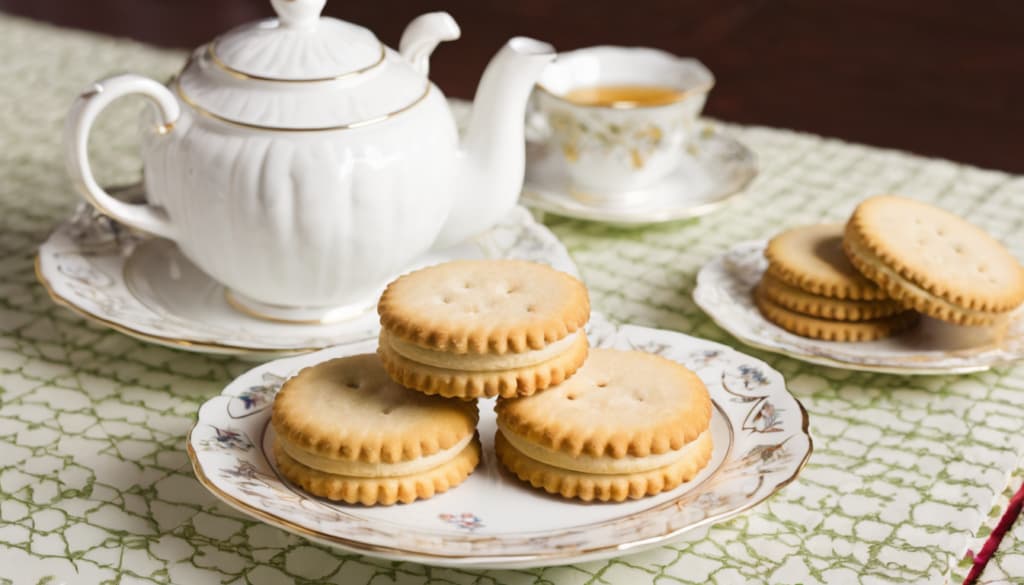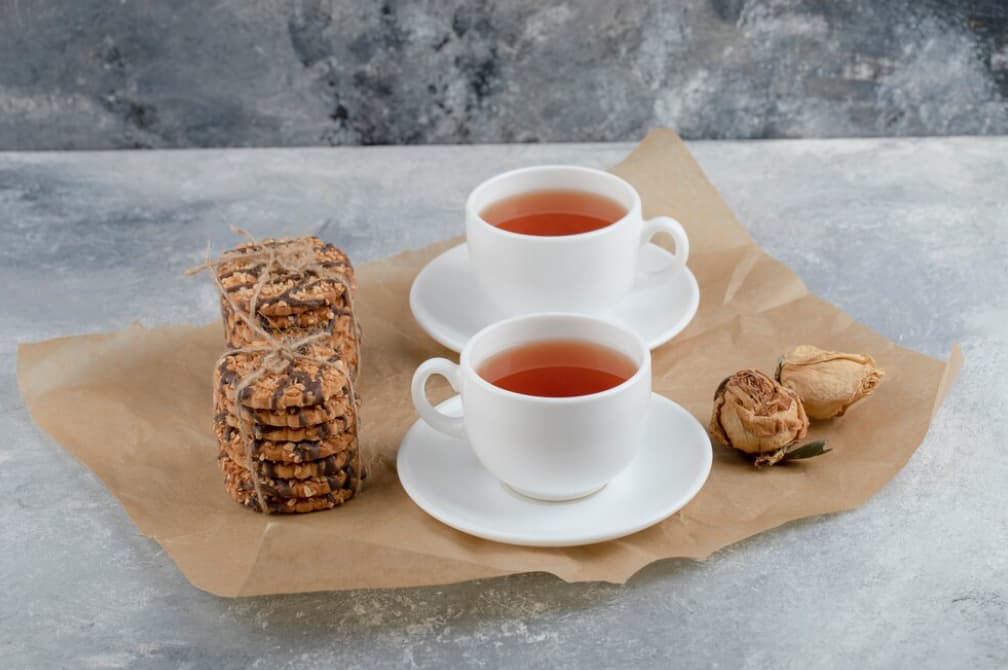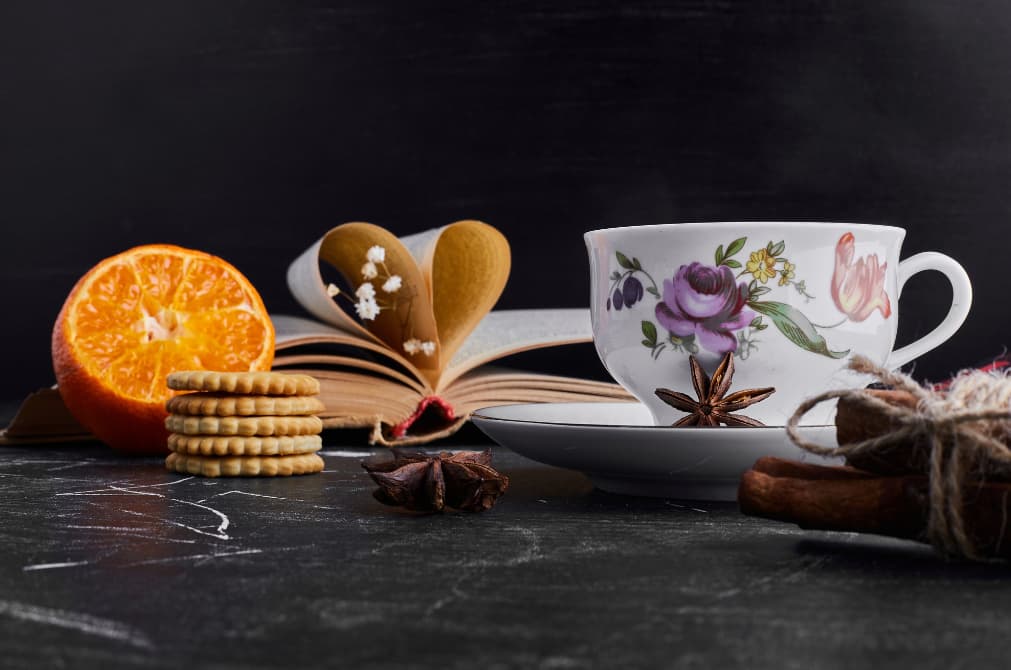Known for its simplicity and British charm, the rich tea biscuit is a classic baked delicacy you might not have sampled unless you’ve traversed the British Isles. This article provides you with a comprehensive guide to understanding rich tea biscuits – their history, uniqueness, and a simple recipe to prepare these delightful treats at home.
You may also like exploring the most popular ethnic cuisines in the USA, which offer a diverse range of flavors and cooking styles.
The History of Rich Tea Biscuit
Originating in Yorkshire in the 17th Century, these sweet baked goods are made primarily from wheat flour, vegetable oil, sugar, and malt extract. Initially known as “Tea Biscuits,” they were enjoyed mainly by the upper-class communities as a light indulgence during afternoon teatimes. Characterized by their unpretentious flavor and hard texture, they gained popularity for being the perfect companion to a piping hot cup of tea.
Britain’s Love for McVitie’s Rich Tea Biscuits
Multiple brands have since produced their variants of rich tea biscuits, with supermarket chains selling these under their brand names. Among them, rich tea creams and finger biscuits filled with vanilla cream enjoy significant popularity. However, the crown jewel of rich tea biscuits still belongs to the brand McVitie’s, which enjoys such immense popularity that on average, 52 McVitie’s biscuits are consumed every second across the UK! The national obsession with these biscuits even led to a political scandal, humorously dubbed “Biscuitgate,” in 2009.
Distinctive for their snapping, rather than crumbling, texture when broken, rich tea biscuits bear an uncanny resemblance to many other cookie varieties in terms of form and color. A unique feature of these biscuits is their ability to retain shape even when dunked in a liquid, absorbing it like a sponge, and making them an ideal accompaniment to any beverage.
The most acclaimed recipe for rich tea biscuits was pioneered by Alexander Grant in 1892 under the auspices of McVitie’s, with a precursor version crafted by Chef Keryn Knight for the 1st Earl of Strafford. Today, McVitie’s produces 27 million of these biscuits daily in Harlesden, making it the largest biscuit factory in Europe.
Global Variations of Rich Tea Biscuits

International adaptations of rich tea biscuits abound, with versions in the US closely resembling shortbread cookies, deviating from the traditional cracker-like texture of British rich tea biscuits. Shapes also vary, with rectangular variants popping up in American and French markets, in contrast to the traditional circular silhouette popular in the UK.
A subtle blend of maltose, sucrose, glucose, and a pinch of salt forms the signature flavor of rich tea biscuits. The “Rich Tea Fingers” have surged in popularity, potentially attributed to their ease of consumption. The biscuit landscape further diversifies with additional versions boasting a chocolate coating or creamy filling.
Step-by-Step Rich Tea Biscuit Recipe
Ingredients:
- 80g Caster Sugar;
- 180g Butter;
- 240g Plain Flour;
- 1tbsp Milk;
- 1tsp Baking Powder;
- 0.5tsp Vanilla Extract.
Directions:
- Preheat your oven to 190c;
- Combine the sugar, flour, baking powder, and butter in a bowl, rubbing the mixture with your fingers until it resembles breadcrumbs;
- Introduce the milk and vanilla extract, working the mix into a firm dough. Roll out the dough to a thickness of about 3-4mm;
- Cut out as many biscuits as you can using a round-shaped cutter, approximately 7-8cm in diameter;
- Arrange the biscuits on a baking sheet, leaving some space between them;
- Bake until they turn light gold, which would typically take around 9 minutes;
- Allow the biscuits to cool as they will become crisper.
Why Try Homemade Rich Tea Biscuits

Choosing to bake your own biscuits opens up a world of customization. Homemade biscuits are not only fresher and healthier, but they also allow you to control the ingredients, eliminating preservatives and adjusting sweetness to your liking.
Rich tea biscuits can be enjoyed in many ways. They are perfect with a cup of tea or coffee, can be used as a base for desserts, or simply enjoyed as a light snack. For a novelty twist, try using them in a biscuit cake or crumble over ice cream.
Conclusion
Rich tea biscuits are a timeless classic from the British Isles, popular for their simplicity and unpretentious flavor. The charm of these biscuits lies in their versatility – they are the perfect accompaniment to your cup of tea or coffee, an excellent base for desserts, and a delightful snack. With our detailed recipe, you can easily recreate these historic biscuits in your kitchen, adding a personalized touch to the timeless tradition. Enjoy the unique satisfaction of homemade biscuits, as you partake in a culinary tradition spanning centuries.
To conclude, Rich Tea Biscuits hold a cherished spot in the heart of the British Isles’ culinary culture. Known for their unique consistency, understated sweetness, and versatility, these biscuits have transcended their origin of teatime treat to become an everyday delight. Whether bought off the shelf or baked fresh at home, Rich Tea Biscuits continue to enhance our snacking experience. Their fascinating history, diverse variations, and the fervor with which they are loved, make them more than just a biscuit. They are a tradition, an emblem of comfort, and a testament to the simple pleasures life offers – all encased in a crisp, golden disc. Relish them dunked in tea, paired with a book on a rainy afternoon, or in the company of loved ones over light-hearted chatter, and you will understand why these biscuits have stood the test of time.
